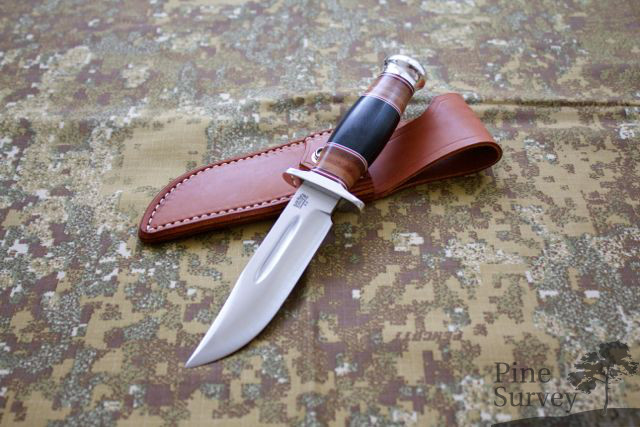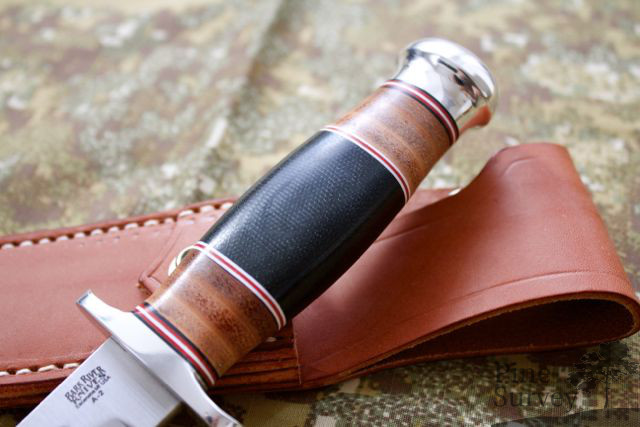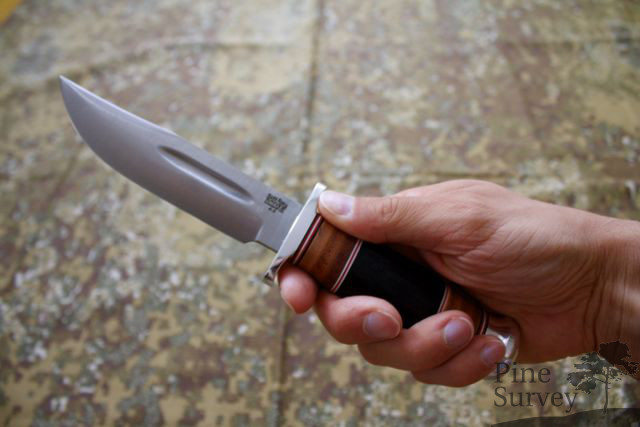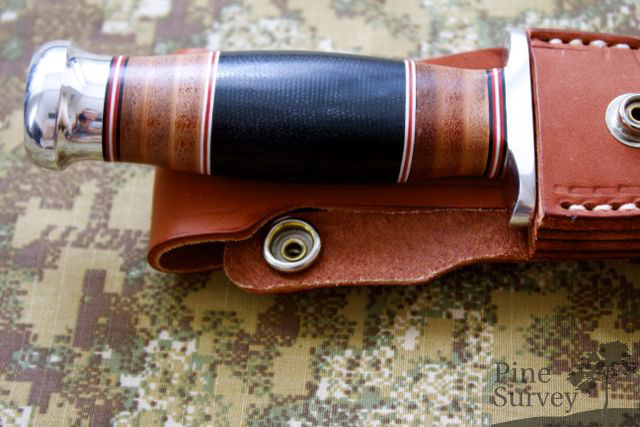Die deutsche Version dieses Reviews kann im deutschen Tacticalforum gelesen werden.
For a long time now I was hesitant to buy a Bark River knife. Simply because there are so many interesting models, so much different possibilities in regard to handle materials, different lengths of some models and knives for simply every application you can think of.
Simply said: I couldn‘t see the wood for the trees. Also I was afraid somehow, I wouldn‘t manage with the convex grind, because I really thought It would be cumbersome for me to sharpen, although it is as easy as any other sharpening method.
The moment I saw the first pictures of the new reissued Boone models, I knew one of them would find a place with me. And thanks to Jenni at Klingenwelt it did.

The classic American bowie shape which influenced the combat knives of the US forces on the one hand, and the handle materials which mesh up with the modell on the other hand just closed the deal for me. Regarding to Bark River Knives, the roots of the design can be retraced to the late 1800s, especially to the „Wade & Butcher Knives“ made in Sheffield, UK.
Eventually I saw my specific model for the first time and I simply had to take it. The combination of the handle materials, which I did not see in this specific configuration before, and the overall look of the knife just did it for me.
First some basic Specs:
Overall length: 23,9 cm
Blade length: 12,7 cm
Handle length: 11,2 cm
Thickness: 0,5 cm
Steel: A2
Handle material: Leather und Micarta
Sheath: Leather

The knife features a classic 5 inch blade- and a 4,5 inch handle lenght and surprises with its wonderful lightness which makes it fast to handle. German users will fall victim to the non metrical system of the Americans. Because of its converted 12,7cm blade lenght it is not legal to carry in Germany without special reason. This should not keep someone from buying this knife though.
Blade:
The whole Blade is a convex grind except of the ricasso. An unobtrusive blood groove gives the knife its classic look one might look for – without it something would be clearly missing.

The back of the blade is edged to scrape metal from a fire steel.

One can see from the symetry of the blade and the marks on it, that this knife was not milled and grinded industrially but made by hand. Because of that the blade has its unique charme and character.

Handle:
My version of the Boone features a fullsized fingerguard – there is also the „hunter“ version which comes without the upper guard.

The handle is made out of two different materials which are put on the tang of the knife. You will find stacked leather, but also black micarta with multicolored micarta spacers.

The handle feels smooth and warm in the hand, the different elements are nicely sealed and there are no edges or borders to feel. At the end of the handle there is a highpolished pommel where you can find the screw for the handle.

In the hand:
As I said before, the knife feels light and fast in the hand. The handle is smooth but I would not call it slippy at the same time. All the different ways to hold the knife are possible and comfortable to grab.

classic hammer grip


reverse grip

forward grip
Leather sheath:
Bark River Knives is in my opinion one of the few companies which combine their knives with a usable sheath. The sheath is manufactured by Sharpshooter Sheaths for Bark River Knives, is made out of leather and features everything you need for this knife.



The sheath is not bulky, the knife sits tight in it even without the strap and the leather is nicely treated and high quality. It even has this nice smell I know from the handle of the Ka Bar knives.
The strap on the sheath runs diagonal over the fingergguard and not over the handle like on so many other sheaths.

The belt loop has a little gap for the strap which is reduced at the top. This way you can tuck the strap behind the belt loop and it doesn‘t come in the way if you want to put the blade into the sheath. This is a simple but effective detail which will extend the life of the strap extensively.


Conclusion:
To be honest – the Boone was love at second sight. After unpacking it I had a sober moment thinking „a knife like any other knife“. Years of collecting and using knives made me blunt obviously. The more I handle the knife though, the more I have to fight with me when it is time to put it away. It just grows on you.
The distinct historic details, the layout and the materials used, are giving the knife a unique charme.
But there is more. Not only the leather but also those little marks you can find on the blade, tell that this was not the product of a steril CNC program. This was made by a human being from beginning to the end and you can tell.
This gives the knife its own soul and the character of a unique piece. The more I think about it the more I am convinced that deep inside the human body our instincts respond to this little attributes. Instincts that were programmed into our DNA over the millennia in which knives accompany us humans.
Insofar it is nice to have not only technical perfect knives, with total symetry and „technical“ materials, but also those which reminds us of our own roots – even if this might sound cheesy.
Since I have been much more philosophical than I had planned I am going to end here. A detailed fieldtest will be added later as soon as I have the time and possibility to get into the woods. Until then you have to be satisfied with these pictures and words.
Thank you for reading, your time and patience. Stay tuned.


2 Response Comments